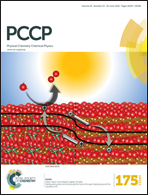Functional porous carbon–ZnO nanocomposites for high-performance biosensors and energy storage applications†
Abstract
A one-pot synthesis method for the fabrication of biomass-derived activated carbon–zinc oxide (ZAC) nanocomposites using sugarcane bagasse as a carbon precursor and ZnCl2 as an activating agent is reported. For the first time, we used ZnCl2 as not only an activating agent and also for the synthesis of ZnO nanoparticles on the AC surface. ZAC materials with varying ZnO loading were prepared and characterized by a variety of analytical and spectroscopic techniques such as FE-SEM, FE-TEM, XRD, EA, XPS, and Raman spectroscopy. ZAC-modified glassy carbon electrodes (GCEs) were found to exhibit remarkable electrochemical properties for simultaneous detection of ascorbic acid (AA), dopamine (DA), and uric acid (UA) as well as hazardous pollutants such as hydrogen peroxide (H2O2) and hydrazine (N2H4) with desirable sensitivity, selectivity, and detection limits. Moreover, ZAC-modified stainless steel electrodes also showed superior performances for supercapacitor applications. The ZAC nanocomposites, which may be mass produced by the reported facile direct route from sugarcane bagasse, are not only eco-friendly but also cost-effective, and thus, are suitable as a practical platform for bio-sensing and energy storage applications.



 Please wait while we load your content...
Please wait while we load your content...